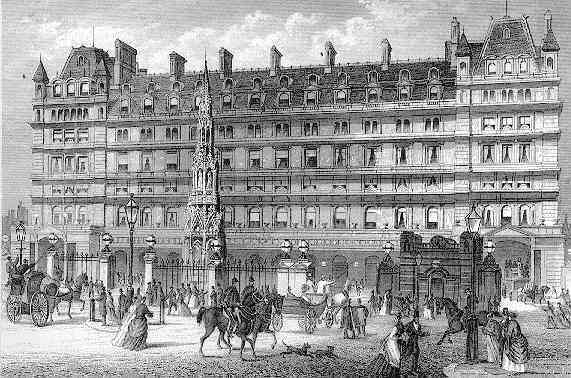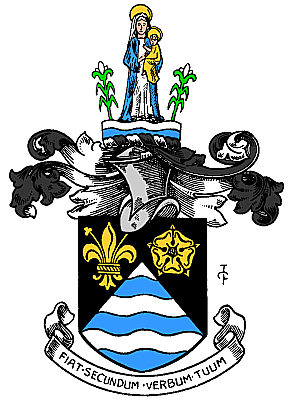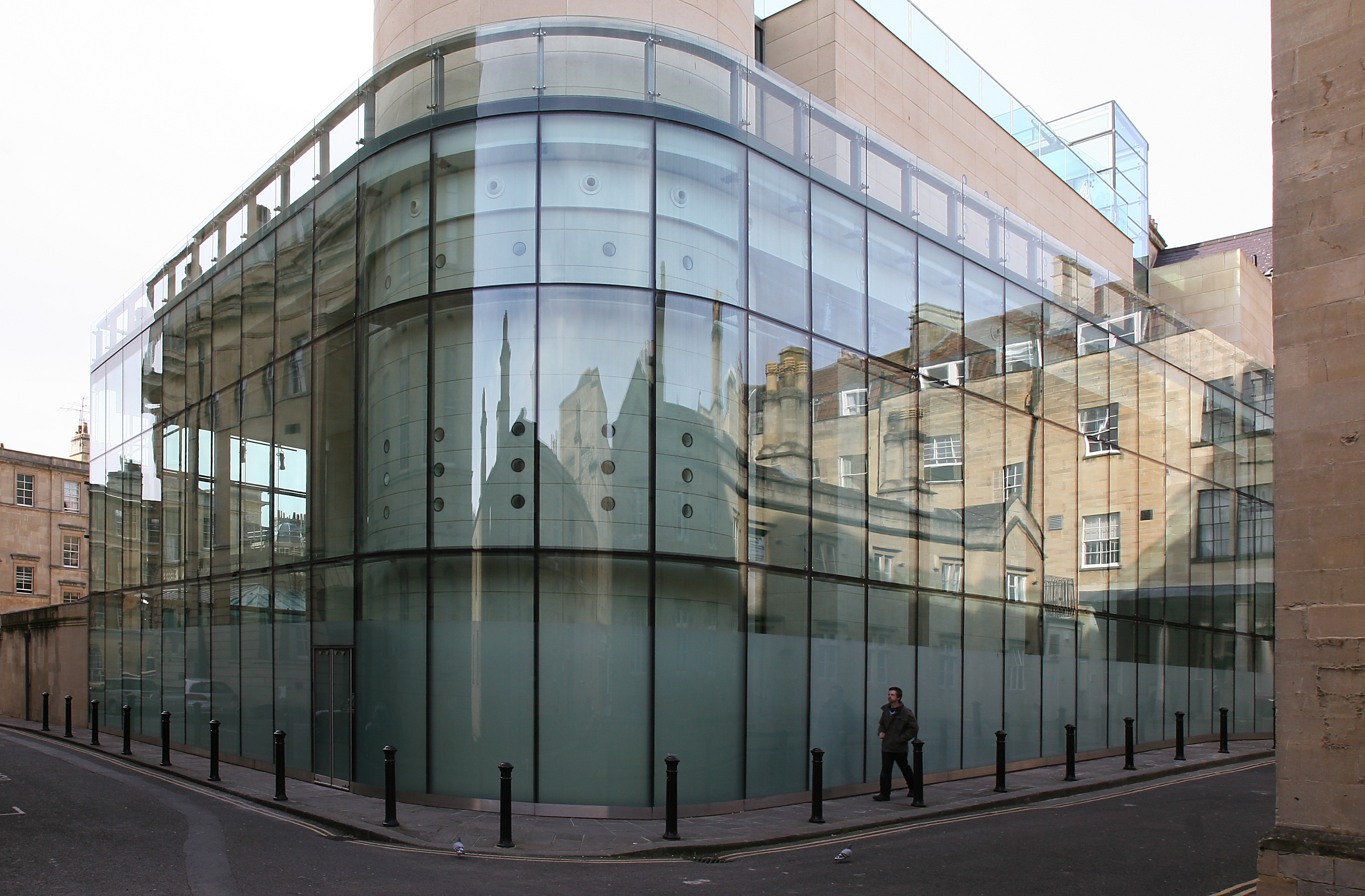|
TFP Farrells
Farrells is an architecture and urban design firm founded by British architect and planner Terry Farrell with offices in London, Manchester, Hong Kong, and Shanghai. The firm has won numerous awards for their characteristic mixed-use schemes, transit-oriented development, contextual urban placemaking, and cultural buildings. Origins Terry Farrell began his professional career in 1961 at the architecture department of the London County Council, where he met fellow staff architect Nicholas Grimshaw. The two became close friends, and in 1965 they founded the Farrell/Grimshaw Partnership, sharing their office for some time with Archigram. They were also part of a "new wave" of British firms experimenting with high-tech architecture. During this period Farrell/Grimshaw produced several pioneering works of high-tech, flexible buildings such as the 125 Park Road housing cooperative (1970) and the Herman Miller factory in Bath (1976); both of which have since been awarded Grade II ... [...More Info...] [...Related Items...] OR: [Wikipedia] [Google] [Baidu] |
Terry Farrell (architect)
Sir Terence Farrell (born 12 May 1938), is a British architect and urban designer. In 1980, after working for 15 years in partnership with Sir Nicholas Grimshaw, Farrell founded his own firm, Farrells. He established his reputation with three completed projects in London in the late 1980s: Embankment Place, 125 London Wall and SIS Building. He garnered a strong reputation for contextual urban design schemes, as well as exuberant works of Postmodern architecture, postmodernism such as the SIS Building, MI6 Building. In 1991, his practice expanded internationally, opening an office in Hong Kong. In Asia his firm designed KK100 in Shenzhen and Guangzhou South railway station in Guangzhou. Early life and education Terence Farrell was born on May 12, 1938 in Sale, Greater Manchester, Sale, Cheshire. His maternal grandfather was born in Manchester to an Irish mother who had emigrated to England from Ireland to escape Great Famine (Ireland), Great Famine. He moved to Newcast ... [...More Info...] [...Related Items...] OR: [Wikipedia] [Google] [Baidu] |
High-tech Architecture
High-tech architecture, also known as structural expressionism, is a type of late modernist architecture that emerged in the 1970s, incorporating elements of high tech industry and technology into building design. High-tech architecture grew from the modernist style, utilizing new advances in technology and building materials. It emphasizes transparency in design and construction, seeking to communicate the underlying structure and function of a building throughout its interior and exterior. High-tech architecture makes extensive use of aluminium, steel, glass, and to a lesser extent concrete (the technology for which had developed earlier), as these materials were becoming more advanced and available in a wider variety of forms at the time the style was developing – generally, advancements in a trend towards lightness of weight. High-tech architecture focuses on creating adaptable buildings through choice of materials, internal structural elements, and programmatic design. I ... [...More Info...] [...Related Items...] OR: [Wikipedia] [Google] [Baidu] |
125 London Wall
125 London Wall, also known as Alban Gate, is a Postmodern architecture, postmodernist building on London Wall in the City of London. Along with Embankment Place and Vauxhall Cross (the SIS Building), it has been described as one of the three projects that established designer Sir Terry Farrell (architect), Terry Farrell's reputation in the late 1980s-to-early 1990s period. In 2004, writer Deyan Sudjic described it as "postmodernism at its most exuberant", placing it at number 5 in a list of Ten Triumphs of recent UK architecture. History The district was once the northeast corner of the Roman settlement Londonium. Though one of the oldest settled parts of the city, the area was completely devastated during The Blitz. It was redeveloped in the postwar decades according to modernist planning principles centred on the automobile. London Wall became an "unpleasant 1960s dual carriageway", a "mini-motorway which acted as divisively upon its surroundings as the old wall had". The sit ... [...More Info...] [...Related Items...] OR: [Wikipedia] [Google] [Baidu] |
Embankment Place
Charing Cross railway station (also known as London Charing Cross) is a central London railway terminus between the Strand and Hungerford Bridge in the City of Westminster. It is the terminus of the Southeastern Main Lines to Dover via Ashford and Hastings via Tunbridge Wells. All trains are operated by Southeastern, which provides the majority of commuter and regional services to south-east London and Kent. It is connected to Charing Cross Underground station and is near to Embankment Underground station and Embankment Pier. The station was originally opened by the South Eastern Railway in 1864. It takes its name from its proximity to the road junction Charing Cross, the notional "centre of London" from which distances from the city are measured. During the 19th century the station became the main London terminus for continental traffic via boat trains, and served several prestigious international services. It was badly damaged by a roof collapse in 1905 and extensivel ... [...More Info...] [...Related Items...] OR: [Wikipedia] [Google] [Baidu] |
Marylebone
Marylebone (usually , also ) is an area in London, England, and is located in the City of Westminster. It is in Central London and part of the West End. Oxford Street forms its southern boundary. An ancient parish and latterly a metropolitan borough, it merged with the boroughs of Westminster and Paddington to form the new City of Westminster in 1965. Marylebone station lies two miles north-west of Charing Cross. The area is also served by numerous tube stations: Baker Street, Bond Street, Edgware Road (Bakerloo line), Edgware Road (Circle, District and Hammersmith & City lines), Great Portland Street, Marble Arch, Marylebone, Oxford Circus, and Regent's Park. History Marylebone was an Ancient Parish formed to serve the manors (landholdings) of Lileston (in the west, which gives its name to modern Lisson Grove) and Tyburn in the east. The parish is likely to have been in place since at least the twelfth century and will have used the boundaries of the pre- ... [...More Info...] [...Related Items...] OR: [Wikipedia] [Google] [Baidu] |
Limehouse Studios
Limehouse Studios was an independently owned television studio complex which opened in 1983 and was built in No. 10 Warehouse (30 Shed) of the South Quay Import Dock at the northern end of the Isle of Dogs in London. The building was demolished just six years later, in 1989, to make way for the Olympia & York development of Canary Wharf which now occupies the site. The opening of the studios was commemorated with a programme called ''Celebration'' which featured host Gary Wilmot and artists including Bonnie Langford. History Number 10 warehouse was built in 1952 for Fruit Lines Ltd, a subsidiary of Fred. Olsen Lines for the Mediterranean and Canary Island fruit trade. At their request, the building was given the name ''Canary Wharf'' after the Canary Islands. Fred Olsen moved operations to a new site at Millwall Docks in 1970. The conversion of the warehouse into TV studios was one of the first successes of the London Docklands Development Corporation. The studios were c ... [...More Info...] [...Related Items...] OR: [Wikipedia] [Google] [Baidu] |
TV-am
TV-am was a TV company that broadcast the ITV franchise for breakfast television in the United Kingdom from 1 February 1983 until 31 December 1992. The station was the UK's first national operator of a commercial breakfast television franchise. Its daily broadcasts were between 6:00 am and 9:25 am. Throughout its nine years and 10 months of broadcast, the station regularly had problems, resulting in numerous management changes, especially in its early years. It also suffered from major financial cutbacks hampering its operations. Though on a stable footing by 1986 and winning its ratings battle with the BBC's '' Breakfast Time'', within a year turmoil had ensued when industrial action hit the company. Despite these setbacks, by the 1990s, TV-am's flagship programme '' Good Morning Britain'' had become the most popular breakfast show on UK television. Following a change in the law regarding television franchising, the company lost its licence and was replaced by GMTV in 1993. ... [...More Info...] [...Related Items...] OR: [Wikipedia] [Google] [Baidu] |
Postmodern Architecture
Postmodern architecture is a style or movement which emerged in the 1960s as a reaction against the austerity, formality, and lack of variety of modern architecture, particularly in the International Style (architecture), international style advocated by Philip Johnson and Henry-Russell Hitchcock. The movement was formally introduced by the architect and urban planner Denise Scott Brown and architectural theorist Robert Venturi in their 1972 book ''Learning from Las Vegas'', building upon Venturi's "gentle manifesto" ''Complexity and Contradiction in Architecture'', published by the Museum of Modern Art in New York in 1966. The style flourished from the 1980s through the 1990s, particularly in the work of Scott Brown & Venturi, Philip Johnson, Charles Moore (architect), Charles Moore and Michael Graves. In the late 1990s, it divided into a multitude of new tendencies, including high-tech architecture, neo-futurism, new classical architecture, and deconstructivism. However, some ... [...More Info...] [...Related Items...] OR: [Wikipedia] [Google] [Baidu] |
Charing Cross Railway Station Mars 2014 01
Charing () is a village and civil parish in the Ashford district of Kent, in south-east England. It includes the settlements of Charing Heath and Westwell Leacon. It is located at the foot of the North Downs and reaches up to the escarpment. In 2011 the parish had a population of 2,766. The Pilgrims' Way, the M20 motorway and Charing railway station (between London Victoria and Ashford International via Maidstone) serve the parish. History The name Charing first appears in 799 as ''Ciorrincg''. The name probably comes from the Anglo-Saxon word ''cerring'', which means a bend in the road, or it may be from ''Ceorra-ingas'', which is Anglo-Saxon, meaning ''people of Ceorra''. The village is sited on the Pilgrims' Way from London to Canterbury, and is one day's walk from Canterbury. There are a number of old manors located around the village, such as Newlands (now a horse stud) and Pett Place. The village had a market recorded in 1285, and a fair recorded in the fifteenth cent ... [...More Info...] [...Related Items...] OR: [Wikipedia] [Google] [Baidu] |
Grimshaw Architects
Grimshaw Architects (formerly Nicholas Grimshaw & Partners) is an architectural firm based in London. Founded in 1980 by Nicholas Grimshaw, the firm was one of the pioneers of high-tech architecture. In particular, they are known for their design of transport projects including Amsterdam Bijlmer ArenA railway station, Waterloo International railway station and the award-winning Southern Cross railway station which was the recipient of the Royal Institute of British Architects Lubetkin Prize. Grimshaw is behind the design of the Sustainability Pavilion, an innovative net-zero building, for Expo 2020. The firm currently has offices in Los Angeles, New York, London, Paris, Dubai, Melbourne and Sydney, employing over 600 staff. Organisation Partners Grimshaw has 21 partners worldwide: Jolyon Brewis, Keith Brewis, Andrew Byrne, Vincent Chang, Andrew Cortese, Nicholas Grimshaw, William Horgan, Mark Husser, Michael Janeke, Ewan Jones, Annelie Kvick Thompson, Kirsten Lees, Declan McCa ... [...More Info...] [...Related Items...] OR: [Wikipedia] [Google] [Baidu] |
English Heritage
English Heritage (officially the English Heritage Trust) is a charity that manages over 400 historic monuments, buildings and places. These include prehistoric sites, a battlefield, medieval castles, Roman forts, historic industrial sites, Listed building, listed ruins, and architecturally notable English country houses. The charity states that it uses these properties to "bring the story of England to life for over 10 million people each year". Within its portfolio are Stonehenge, Dover Castle, Tintagel Castle, and the "best-preserved" parts of Hadrian's Wall. English Heritage also manages the London blue plaque scheme, which links influential historical figures to particular buildings. When originally formed in 1983, English Heritage was the operating name of an executive non-departmental public body of the Her Majesty's Government, British Government, officially titled the Historic Buildings and Monuments Commission for England, that ran the national system of heritage prot ... [...More Info...] [...Related Items...] OR: [Wikipedia] [Google] [Baidu] |
Listed Buildings In England
{{disambig ...
Listed may refer to: * Listed, Bornholm, a fishing village on the Danish island of Bornholm * Listed (MMM program), a television show on MuchMoreMusic * Endangered species in biology * Listed building, in architecture, designation of a historically significant structure * Listed company, see listing (finance), a public company whose shares are traded e.g. on a stock exchange * UL Listed, a certification mark * A category of Group races in horse racing See also * Listing (other) Listing may refer to: * Enumeration of a set of items in the form of a list * Listing (computer), a computer code listing * Listing (finance), the placing of a company's shares on the list of stocks traded on a stock exchange * Johann Benedict List ... [...More Info...] [...Related Items...] OR: [Wikipedia] [Google] [Baidu] |






